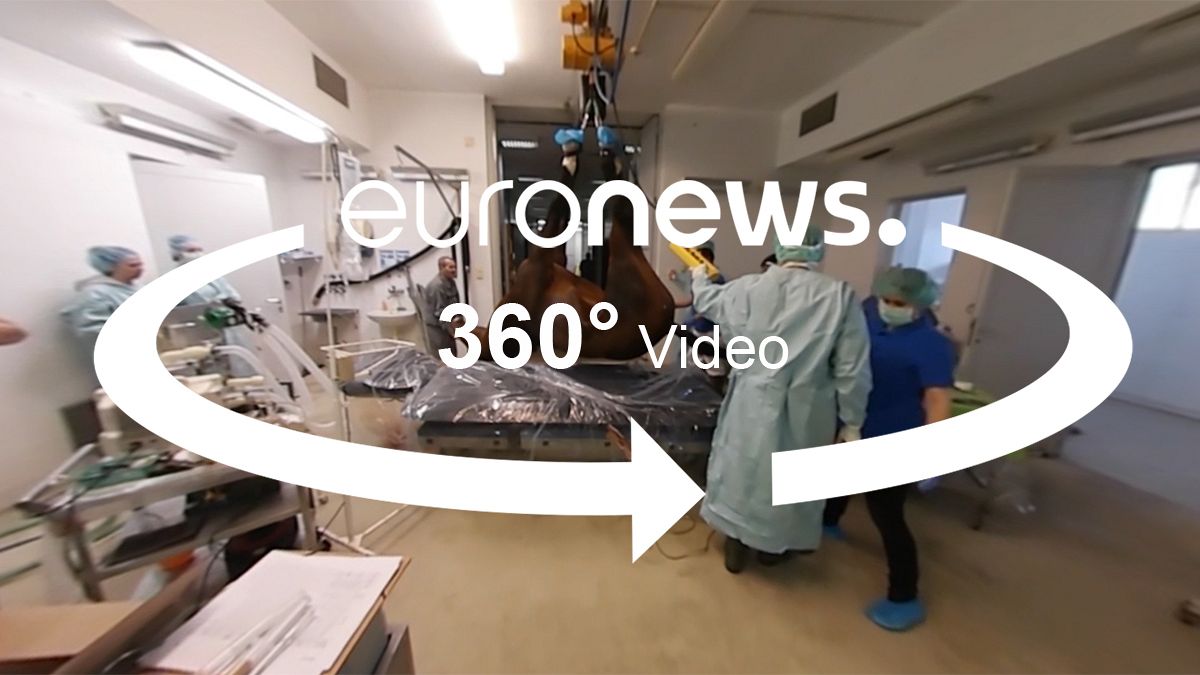Come and have an immersive experience in equine surgery...
Horses are fragile, delicate creatures with a lot of health issues. A broken leg or a stomach ache can be a huge problem both for the horse and its owner: it may need an operation that is both risky and expensive. Horse surgeons aren’t exactly a common lot either. So euronews went to Central Eastern Europe’s largest horse clinic in Hungary to see how equine surgery is done.
The clinic itself is on a ranch near the small town Üllő, but it belongs to the Szent István Veterinary University of Budapest. The vets here handle around 600-800 patients a year, and perform 300-400 surgeries. Euronews recorded two operations: a change of plaster cast on a colt with a fractured leg and a surgery on a gelding with a lump on its neck.
The intricacies of horse anaesthesia
The colt had its leg broken right after it was born. A bone fracture can end a horse’s life, but this one was saved a few days ago by the surgeons. To change the plaster cast, the vets have to put the colt to sleep. The colt’s mother will fight to protect the little one, so they have to drug her too. These are just the first complications that arise when you want to operate on a horse.
Among natural conditions, horses rarely lie down. When laid out for a prolonged period, their blood circulation might collapse, their muscles and lungs can be damaged. So even for a routine operation like this, you need a huge team and intricate machinery simply to keep the sleeping horse alive.
Dr. Gábor Bodó, the clinic director changes the plaster cast of the colt. He says the only problem that might arise is that the horse is feeling too well. Ever since they stabilised the fractured leg it keeps on jumping around: The colt could break its leg again.
Horses even need help waking up. Otherwise they could break their legs trying to stand up, while still under the effects of the anaesthesia. The colt is brought to the waking room, where three assistants help it to stand up. Shortly after it returns to its mother.
The surgeon’s approach
The next patient is an adult horse, a gelding. It has a huge lump on its neck that the vets are planning to open up. X-rays didn’t show anything inside. The horse is anaesthitised in a corridor then tied to a pullie system. When the horse is safely on the operating table, the anesthetist prepares the scene for the surgeon.
As the director of the clinic, Dr Bodó says, they’ll stick to the surgeons’ approach: they cut the lump out and “ask questions later”.
This operation does not count as a complicated one, but it still lasted 2 hours. The thorn of an acacia tree caused the problem. The horse’s immune system was trying to isolate the alien body, so it grew a sheath of flesh around it. As it was not metal, the x-rays could not pick it up.
Horses are among the most expensive domesticated animals, but it’s never certain that it makes economic sense for the owner to pay the steep price of a surgery.
This gelding is lucky: it is now in the waking room. People are actually sitting on top of it, in order to stop the horse from getting up while still dizzy. In a few days, it can return to the pasture for grazing.
